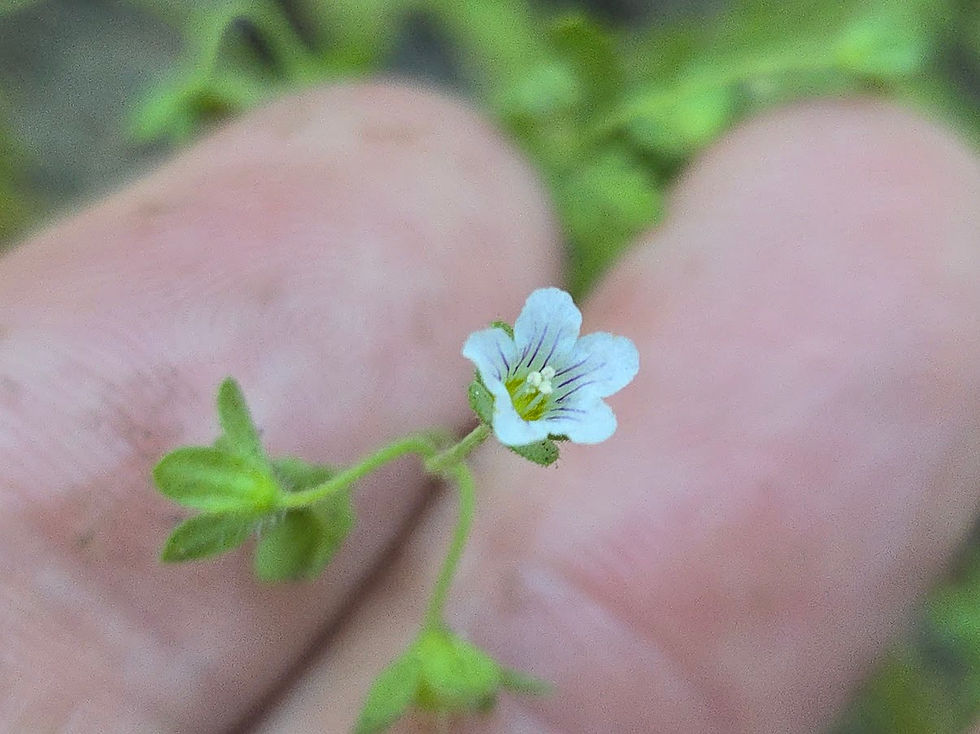From the Potting Bench | Douglas Iris
- Friends of Sausal Creek
- Jan 11, 2024
- 2 min read
One of the interesting plants found in the Sausal Creek Watershed is a perennial favorite, the Douglas iris (Iris douglasiana). Recognized and appreciated in the wild for its dramatic beauty by many, it was neither collected nor named by the prodigious 19th century botanical explorer, David Douglas. An admiring colleague named the plant in his honor after Douglas’s untimely death at age thirty-four while collecting in Hawaii.

The Ancient Greek word “iris” turns up in mythology as the name for the goddess of the rainbow. It is easy to see why our flower with a light blue-violet hue carries this association. Moreover it seems to have an enduring popularity around the nursery, as a restoration favorite, and with gardeners. Many mature plants all but flew off the table during the annual plant sale. Others have been outplanted recently in Dimond Canyon, Dimond Park, and Fern Ravine restoration sites. Still others have been planted and flourish in a demonstration garden adjacent to the FOSC nursery gate.
As with many of our Sausal Creek native plants, Indigenous Peoples had a plethora of uses for the Douglas iris (laawik to the Coast Miwok) long before naming and collecting by Europeans. A major use was as cordage for a variety of applications. Single fibers were taken from the margins of leaves harvested in the fall. These fibers were then twisted into strings or thicker ropes depending on the ultimate use. For instance a deer snare rope could be up to twenty feet long and one-half inch in diameter, the product of intensive labor. Other uses might be for fishing nets, smaller snares, hairnets, regalia, and bags. One reported use for the entire leaf was to wrap babies to keep them cool and prevent dehydration. And seeds could be ground into flour as a food source.
As might be expected from deep Indigenous knowledge, the iris has a variety of medicinal uses, too. Externally, iris rhizomes or roots have been used to treat sores, infected wounds, ulcers, and even freckles. Internal uses included a tea form to treat kidney problems, chewing roots to cure coughs, a decoction to soothe sore eyes, a piece of root to kill tooth cavity pain, and smoke from burned roots to alleviate dizziness–pretty impressive versatility.
One odd aspect of the Douglas iris has to do with cattle and grazing lands. While it is not strictly poisonous, cattle find the plant unpalatable and leave it alone. Accordingly, heavily grazed pastures might have dense clumps of iris out-competing grasses to the dismay of ranchers.
Finally, the iris has several taxonomic cousins due to association with David Douglas who collected hundreds of species if not more for the British Royal Horticultural Society in the 1820s and 1830s. The Douglas fir of legendary lumber importance is named for him. Although he didn’t discover the conifer, he did introduce it to Great Britain. And more whimsically, the Douglas squirrel, or chickaree, beloved by John Muir is also named for him.
–Peter Van der Naillen - FOSC Native Plant Nursery Volunteer


